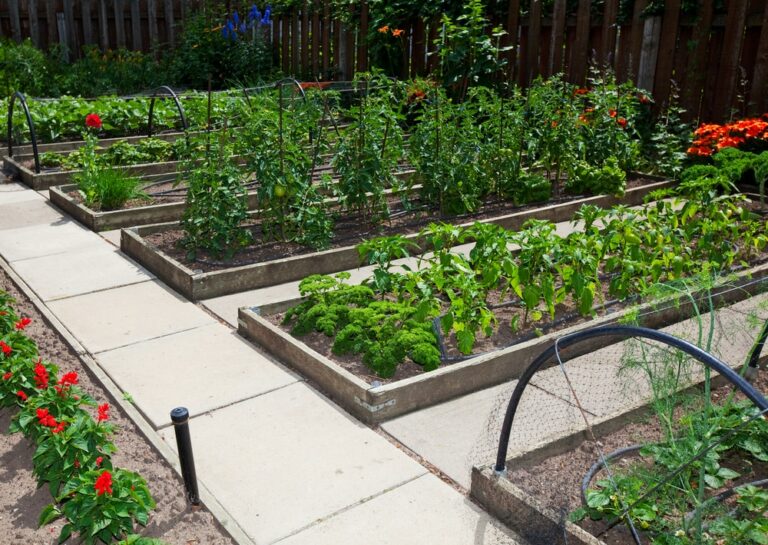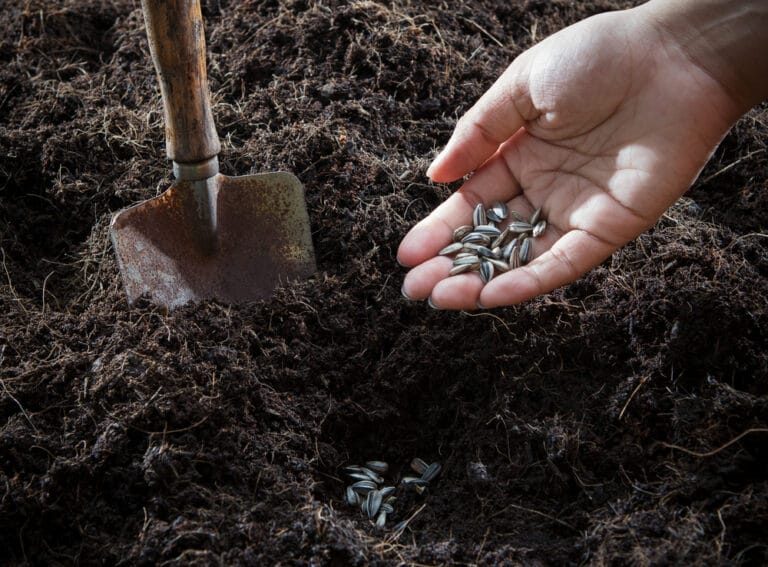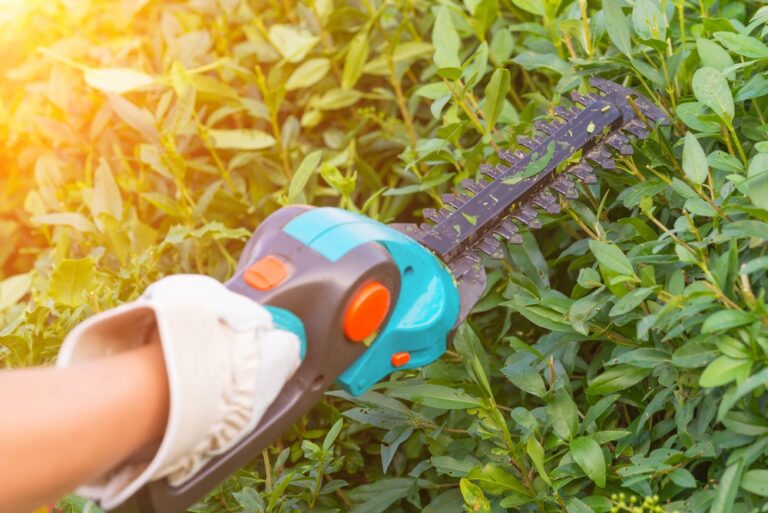Are you thinking of upgrading your grass? Seeds are a great way to do that, but you’ll need to learn how much water is the right amount for the best moisture levels in the soil. In this article, we share our best advice on how often to water grass seed and how to take care of every inch of your garden.
Watering New Grass Seed
After all of your hard work of preparing the soil and planting the grass seed, it’s important that you know how often to water your lawn. Before you initially plant the grass seed, water the soil to a depth of up to eight inches. (You can measure this depth by inserting a screwdriver or pencil in the soil and seeing how much resistance it offers).
After you’ve planted the grass seed, you’ll need to water it 10 minutes after. Doing this ensures that the soil is moistened and soft for the top few inches. Because when seeds become dry, they die. You need to remain committed to watering your grass seed every day to enhance the germination process, which typically takes 5 to 30 days, depending on the seed mixture you have, your climate and your soil condition. Until your seeds have started sprouting out of the ground, your soil must remain moist without being too soggy or on the dry side.
It’s also worth reminding you that not all grass seeds will flourish simultaneously, which can lead to some inconsistencies in your lawn. Therefore, you’ll need to evenly water the lawn to keep the entire surface moist until you notice that all seeds have germinated. You may even find that using a stopwatch helps you to evenly water new grass seed for the best results.
How often do you need to water your grass seed? The answer to this question depends on the amount of rainfall you have in your area after planting the seeds. If there’s little-to-no rainfall during this time, consider watering the large areas up to three times a day to ensure that the soil has enough water deep down for maximum growth.
Watering New Grass Seed Based on Its Size
When watering new grass seed, consider the inches of soil you need to cover for optimal results. Below, we’ve dissected the amount you need to water new grass seed based on the lawn quality and size.
Existing Lawn
If you already have green grass and have placed new grass seed on top, you should water the area daily with a 5–10-minute time each session. If you water a large area using sprinklers, remember to direct the head to various sections in your garden for the same level of moisture throughout. Begin by watering the new seed twice a day and then reducing it to once a day after the first week, using temperature and humidity to guide the best time to water.
Patchy Lawns
If your lawn is looking patchy from the seed mixtures and you have a large surface area, repeat the same process as above. On the other hand, hand-water smaller areas every day or twice daily, when needed, to keep the soil moist.
Completely New Lawns
For gardens without any grass but only new seedlings on top, ensure that you don’t over-water the entire area as this can lead to killing the seed. You should also avoid trampling on the grass because this can leave depressions.
Ensure that the top layer of soil is always moist to prevent the seedlings from dying. Repeat the watering process for around five minutes two-three times daily. But bear in mind the weather, i.e., water more when it’s hot and less when it’s been raining (don’t forget to adjust your sprinkler timing if you use one on automation). You should also not water the new lawn too deeply because this can send the water too deep into the soil, which isn’t necessary during the early growth stage.
Best Time of Year to Water Grass Seed
Preparation is key to a healthy lawn, which is why you should water the surface early in the day and then later at night when there are two different temperatures per day. You can opt for a water timer for convenience if you’ll be out of the house during this schedule or are forgetful. Sprinkles are a great way to automate watering your garden with minimal hassle. In particular, a small sprinkler is preferred for small areas, while a square-shaped sprinkler works best for large areas.
Additionally, you might also want to know the duration of watering grass seed each day. Generally speaking, we recommend a 10-minute session each time to keep the soil’s moisture levels at optimum and prevent any drowning or soaking.
When you find that your grass seeds are sprouting, you’ll need to water the soil more often and deeper into the ground. You can do this by increasing your watering sessions. If the weather becomes warm, we suggest adding another session to your day or switching out the evening session when the air’s temperature is cooler.
Factors to Avoid When Watering New Grass Seed
It’s good to know some factors to avoid when you water new grass seed. Below are the most important things to keep at the front of your mind each time you go to water your lawn.
- You should never have puddles of water on your lawn. It is an indication that you’re using far too much water, which can cause the seed to drown and never sprout. In fact, over-watering may even leave the seed floating around, and thus, not being evenly distributed on your lawn.
- If you notice that there is seed movement, reduce the frequency and amount of watering on your lawn.
- It’s tempting to over-water shaded areas because you think that the grass seed needs more moisture for germination. However, keep a consistent watering pattern to avoid over-or under-watering your new lawn. In fact, check that your sprinklers (if you use them) are watering evenly and they’re not clogged or poorly designed. It is why it’s best to monitor sprinklers in action rather than leave them completely unattended.
What Happens if You Don’t Water Grass Seed?
Caring for new grasses requires patience and maintenance. But what happens if you forget or neglect to water your new turf? In particular, some people choose not to water their turf during the winter season because they don’t think the lawn can become dehydrated. However, this is a big mistake because grasses require maintenance and care in every season. Not watering your grass seed means that the roots won’t stay alive, and the grass will become dormant after a couple of weeks without water. And, after six weeks, the grass will begin turning brown with a hot climate in summer, potentially killing the lawn.
Are Sprinklers a Good Idea?
If you want to automate watering your lawn, you can invest in sprinklers. For optimum results, opt for an oscillating sprinkler system to cover a medium-size grass area, offer a consistent spray and prevent missed patches. For larger lawns, you might want to consider a travelling sprinkler, which moves up and down your lawn for even coverage.
The great thing about sprinklers is that they do the work for you. So, as long as you enter the correct time, you don’t have to do everything while still having thick, green grass. It’s also a great way to water your lawn without you trampling all over it. But you will need to adjust the settings at different times of the year.
Care for Your New Grass
Knowing how often to water grass seed will help ensure better grass seed germination. It’s essential always to keep your soil wet enough for it to be moist but not too soggy.
If you’ve grown a lawn from seed, we’d love to discover how much water you used and your strategies for keeping the soil moist. Share your tips and recommendations in the comments.







